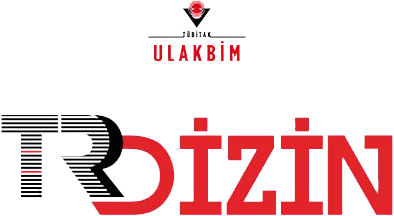
Bu eser Creative Commons Alıntı-GayriTicari-Türetilemez 4.0 Uluslararası Lisansı ile lisanslanmıştır.













Evaluation of The Cases Applied to Turhal State Hospital with Tick-bite
Emine TÜRKOĞLU1, Sedef Zeliha ÖNER21Turhal State Hospital, Department of Infectious Diseases and Clinically Microbiology, Turhal, Tokat, Turkey2Turhal State Hospital, Department of Medical Microbiology, Turhal, Tokat
INTRODUCTION: Crimean-Congo hemorrhagic fever (CCHF) is a fatal zoonotic disease that is endemic in Tokat. The aim of this study was to investigate the demographic, clinical and laboratory findings of the patients presenting with tick bite, to discuss the necessity of laboratory tests in early stage, and to evaluate the follow-up and treatment results of patients with CCHF.
METHODS: In this study, cases applied to a Turhal State Hospital between 1 May - 30 September 2019 with tick bite were evaluated. Symptoms and laboratory tests were evaluated on the 3rd, 7th, 10th and 14th days after the patients' arrival. Patients with suspected CCHF were hospitalized and viral genome and/or specific antibody tests were performed for diagnosis. Demographic, clinical and laboratory data of the patients were obtained from hospital automation system.
RESULTS: In this study 105 male (59%), a total of 178 cases were evaluated. Their ages ranged from 1 to 89 years. Most of the cases were applied in June (n = 56, 31.8%). Of the cases, 115 (64.6%) were engaged in agriculture and animal husbandry, 144 (80.9%) were admitted to the hospital on the first day of tick bite, 88 (49.4%) of them, tick were removed by the health employeer in hospital. Four patients (2.24%) were diagnosed as CCHF. The incubation time was 1-13 days. Statistically headache, myalgia and nausea were significantly higher in CCHF group but there was no significant difference in any laboratory findings.
DISCUSSION AND CONCLUSION: In cases presenting with tick bite, the tick should be removed with a suitable technique, immediately. Performing laboratory tests at regular intervals in patients without symptoms is not a guide for early diagnosis of CCHF and it is not cost effective. If leukopenia, thrombocytopenia, AST, ALT and LDH elevations are detected in patients with nausea, headache and myalgia after tick bite, they should be carefully monitored for CCHF.
Turhal Devlet Hastanesine Kene Tutunması ile Başvuran Olguların Değerlendirilmesi
Emine TÜRKOĞLU1, Sedef Zeliha ÖNER21Turhal Devlet Hastanesi, Enfeksiyon Hastalıkları ve Klinik Mikrobiyoloji, Turhal, Tokat2Turhal Devlet Hastanesi, Tıbbi Mikrobiyoloji, Turhal, Tokat
GİRİŞ ve AMAÇ: Kırım Kongo kanamalı ateşi (KKKA), Tokat’ ta endemik olarak görülen, ölümcül seyredebilen zoonotik bir hastalıktır. Bu çalışmada kene tutunması ile başvuran olguların demografik, klinik ve laboratuvar bulgularının incelenmesi, erken dönemde laboratuvar bulgularının gerekliliğinin tartışılması, KKKA tanısı alan hastaların takip ve tedavi sonuçlarının değerlendirilmesi amaçlanmıştır.
YÖNTEM ve GEREÇLER: Bu çalışmada Turhal Devlet Hastanesi’ ne 1 Mayıs – 30 Eylül 2019 tarihleri arasında, kene tutunması nedeni ile başvuran olgular değerlendirildi. Hastaların geliş muayenelerinden sonra 3., 7., 10. ve 14. günlerde semptomları ve laboratuvar tetkikleri değerlendirildi. KKKA açısından şüpheli olgular kliniğe yatırılarak kesin tanı için viral genom ve/veya özgül antikor testleri yapıldı. Hastaların demografik, klinik ve laboratuvar verilerine hastane otomasyon sisteminden ulaşıldı.
BULGULAR: Çalışmaya 105’i (%59) erkek olmak üzere 178 olgu dahil edildi. Olguların yaşları 1-89 arasında değişmekteydi. En sık başvuru Haziran (n=56, %31.8) ayında idi. Olguların 115’i (%64.6) tarım ve hayvancılıkla uğraşmakta idi, 144’ü (%80.9) kene tutunmasının olduğu ilk gün hastaneye başvurmuştu, 88 (%49.4) hastada kene hastanede sağlık personeli tarafından çıkarılmıştı. Dört (%2.24) hasta KKKA tanısı almıştı. İnkübasyon süresi 1-13 gündü. KKKA grubunda istatistiksel açıdan baş ağrısı, miyalji ve bulantı anlamlı olarak fazlaydı ancak hiçbir laboratuvar bulgusunda anlamlı farklı yoktu.
TARTIŞMA ve SONUÇ: Kene tutunması ile başvuran olgularda kene uygun bir teknikle ve vakit kaybetmeden çıkarılmalıdır. Semptomu olmayan olgularda belirli aralıklarla laboratuvar tetkiklerinin yapılması KKKA hastalığının erken tanısı için yol gösterici olmadığı gibi maliyet etkin de değildir. Kene tutunması sonrası yeni başlayan bulantı baş ağrısı ve miyalji yakınması olan hastalarda lökopeni trombositopeni, AST, ALT ve LDH yüksekliği saptanması halinde kişi KKKA hastalığı açısından dikkatle izlenmelidir.
Corresponding Author: Emine TÜRKOĞLU, Türkiye
Manuscript Language: Turkish
(839 downloaded)


